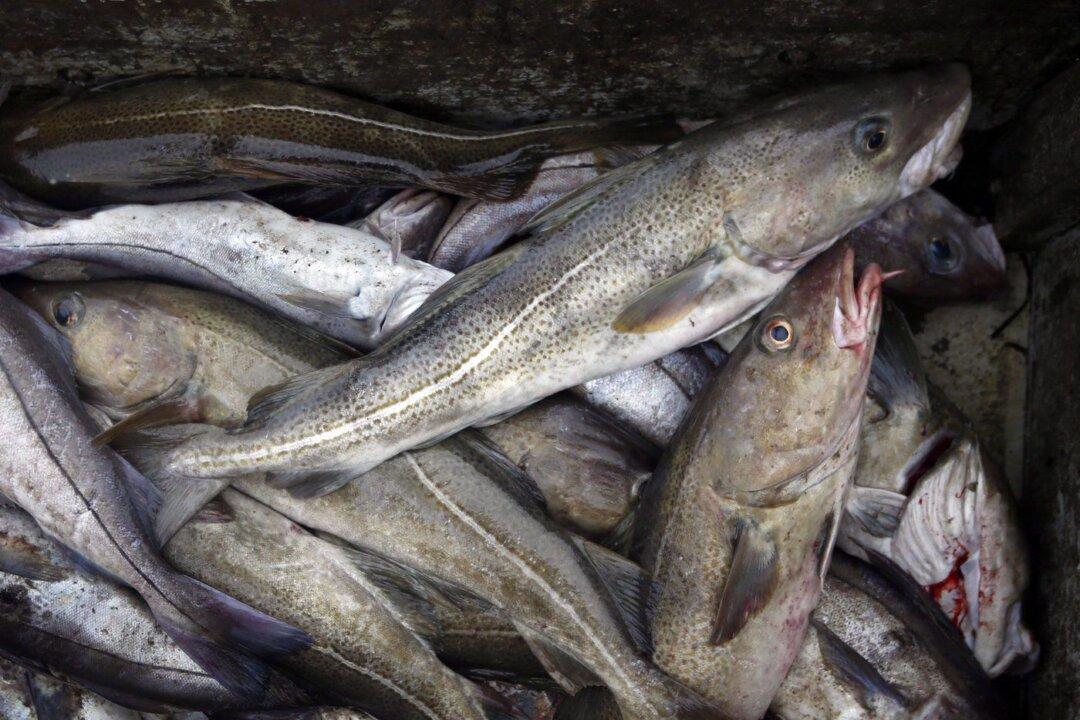
Cod fill a box on a trawler off the coast of Hampton Beach, N.H., on Apr. 23, 2016. The Canadian Press/Robert F. Bukaty
Bottom-dwelling fish may be less affected by climate change than previously thought, according to a new study.
A study published in the journal Nature on Aug. 30 found that the effect of rising sea temperatures on
bottom-dwelling fish was “often minimal.”





